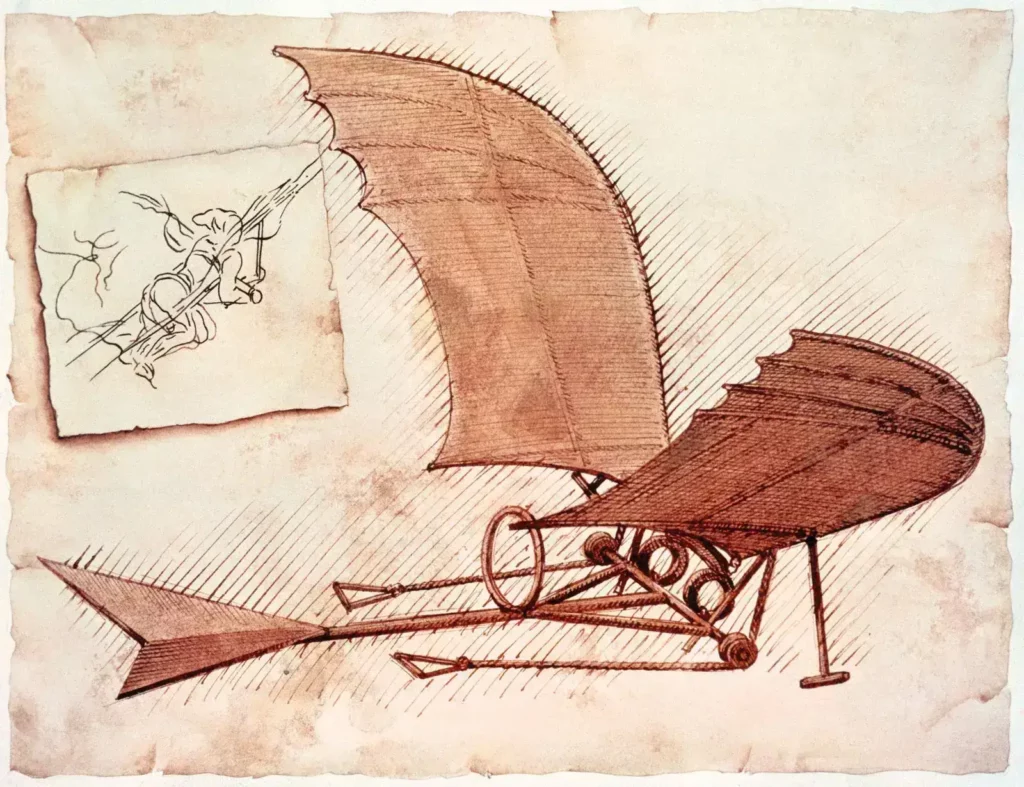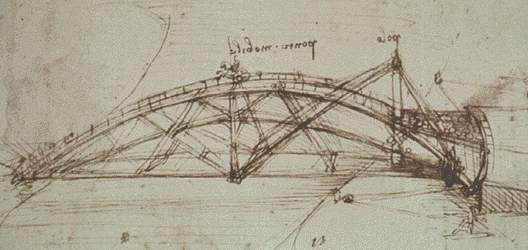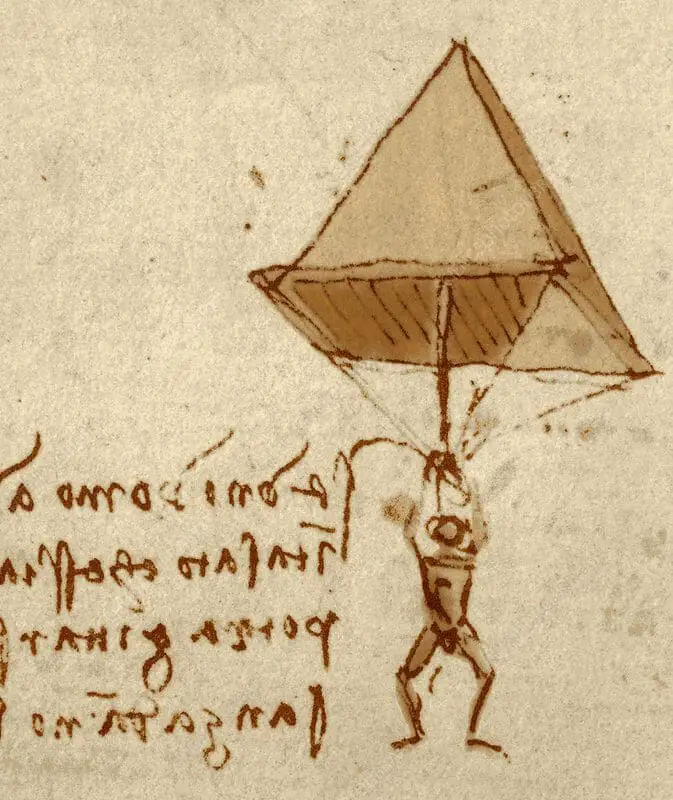Leonardo da Vinci, a polymath of the Italian Renaissance, left behind a treasure trove of sketches that serve as a window into the mind of a man who defied the boundaries of his time. As we venture into the labyrinth of Da Vinci’s visual thoughts, we embark on a journey beyond mere aesthetics, touching upon the profound interconnection between art and science.
His paper-bound legacy, meticulously crafted with pen, ink, and chalk, continues to captivate scholars and art lovers alike, offering an unparalleled glimpse into the anatomical, mechanical, and natural curiosities that piqued the curiosity of this unparalleled genius.
Table of Contents
- The Genius of Da Vinci’s Sketches
- Technique and Materials
- Influence and Legacy
- Preservation and Accessibility
- Related Questions
The Genius of Da Vinci’s Sketches
Unveiling the Multifaceted Genius of Leonardo Da Vinci Through His Sketches
Leonardo da Vinci, a name that resonates with genius, a moniker that embodies the quintessence of the Renaissance man, has left an indelible mark on the world not only through his masterpieces such as the Mona Lisa and The Last Supper but also through his vast collection of sketches.

Da Vinci’s sketches are a window into the soul of a polymath, offering an intimate glimpse into the workings of a mind that never ceased to inquire, explore, and innovate.
These sketches, often inscribed on the pages of what now are termed the codices, display the extraordinary breadth of da Vinci’s interests and intellect. They delve into anatomy, the dynamics of water, the principles of flight, the mechanics of machines, and the delicate subtleties of human expression.
Each line and shade echoes Leonardo’s undying quest for knowledge and an emblem of his relentless pursuit of perfection.
The anatomical studies stand out as a testament to Leonardo’s dedication to truth and science. Breaking the taboos of his time, da Vinci conducted dissections to understand the body’s inner workings—a practice frowned upon by the society of his era.
His anatomical sketches depict muscles, ligaments, the vascular system, organs, and skeletal structure with remarkable precision and artistry. These drawings are not just mere records; they blend keen scientific observation and transcendent artistic skill.
On the other hand, his scientific diagrams reveal more than just an artist at work; they reveal an inventor and engineer centuries ahead of his time. Da Vinci’s helicopter, known as the aerial screw, and his studies of the tank and other war machines exhibit a mind that understood the principles of physics and mechanics.
Through his sketches, one sees the formulation of modern machines and gadgets, all borne from the restless intelligence of a visionary.
Furthermore, da Vinci’s studies of water – the Deluge drawings – captivate with their swirling motions and complex fluid dynamics. They portray water as a tranquil element and a forceful, living entity, exemplifying Leonardo’s ability to perceive and construct motion and force. These skills were undoubtedly integral to his artistic compositions.
Perhaps the most fascinating aspect of Leonardo’s sketches is his exploration of human emotion. His drawings of various subjects, from smiling infants to somber elders, from the peaceful visage of Madonna to the grotesque profiles of criminal types, are explorations of the human condition.
In these sketches, every curve, shadow, and line is an articulation of an internal state, manifesting Leonardo’s deep understanding of the psyche and how it could be expressed through art.
Therefore, Da Vinci’s sketches are far more than preliminary exercises or idle doodles. They are the intellectual blueprints of an individual who embraced the synergy between art and science. These pages depict a relentless curiosity and a propensity for a level of detail that goes beyond artistry and delves into the foundations of what we now refer to as various scientific disciplines.
In scrutinizing the sketches of Leonardo da Vinci, one uncovers the reflections of a multifaceted genius. Each line drawn, each shade applied, and every figure captured is a brushstroke in the grand portrait of a man who could intertwine the poetic with the practical, the earthly with the ethereal, and the observable with the imaginable.
Leonardo’s sketches are not just artifacts of a bygone era; they are timeless beacons of inspiration and ingenuity, evidence of a mind and soul that forever sought the confluence of truth and beauty.

Technique and Materials
Unveiling Da Vinci’s Sketching Secrets: Techniques and Materials of a Renaissance Master
At the intersection where artistry and ingenuity meet, the sketches of Leonardo da Vinci unfurl a tapestry of skill that captures the essence of innovation and finesse. As we delve into the meticulous techniques and materials Da Vinci employed in his sketching, a richer understanding of this master’s craft is revealed, shedding light on how his transcendent work came to be.
Da Vinci’s penchant for experimentation is nowhere more evident than his choice and application of sketching materials. His use of metalpoint, particularly silverpoint, was a testament to his discipline and eye for precision.
This technique, where a silver stylus would etch lines on a specially prepared paper, left virtually no room for error—a challenge effortlessly overcome by the adept hands of Da Vinci. Over time, the metal point sketches oxidize, bestowing upon them a soft, ethereal quality that seems to echo through the centuries.
Adept at adapting his method to suit his subject, Da Vinci often turned to ink, harnessing the fluidity of this medium for more forgiving strokes and dynamic shading. His mastery of “chiaroscuro,” the contrast technique between light and dark, is nowhere more evident than in his pen-and-ink studies.
The hatching and cross-hatching he employed imbues his sketches with a three-dimensional quality, breath, and form emerging from the paper.
Not one to avoid innovation, da Vinci utilized diverse papers for his drawings. He found a welcome canvas in everything from coarse papers to fine vellums, his selection often reflecting the purpose of the study at hand.
In his anatomical studies, for instance, the smooth surface of fine vellum allowed for intricate detail, capturing the sheer complexity and nuance of the human body with startling clarity.
Da Vinci’s tool kit was not limited to conventional materials. Red and black chalks frequent his work, highlighting the liveliness and warmth of human flesh or the vibrant characteristics of plants and landscapes. In some studies, one can observe the use of “sfumato,” a smoke haziness achieved by deftly blending these chalks to create subtle transitions in tone and color.
Perhaps one of the lesser-known aspects of da Vinci’s sketching practices was his revolutionary use of “cartoons,” full-scale preparatory drawings for more significant works. These cartoons were carefully pin-pricked along their outlines and ‘pounced’ with a bag of soot to transfer the design onto another surface.
This ingenuity served as a method of sketch transfer and allowed for various iterations of his compositions, evidence of an artistic process steeped in reflection and iteration.
It is essential to understand that Leonardo’s approach was not solely technical but deeply intertwined with his voracious curiosity about the world around him. Every stroke on paper embodied an inquiry, an exploration of the underlying principles of nature.
His sketching was never a mere step in creating more significant works but rather a fundamental practice through which he engaged with his ceaseless quest for knowledge.
Leonardo da Vinci immortalized his keen observations and vivid imagination through his innovative use of techniques and materials.
His sketches transcend the role of preliminary studies; they are compelling artworks in their own right, capturing the ceaseless curiosity and boundless creativity of a mind that will forever stand as a paragon of the Renaissance spirit.

Influence and Legacy
The inextricable link between Leonardo da Vinci’s sketches and artistic pedagogy is a beacon of inspiration for generations of artists. His consummate grasp of human anatomy, evident in the ligaments and musculature he so deftly illustrated, transcended mere depiction.
It erected a scaffold upon which modern anatomical art education is perched – a testament to precision, proportion, and the ability of the line to communicate the human form with scientific and artistic clarity.
Da Vinci’s commitment to observation and experience, as demonstrated through the authenticity of his Animalia sketches, positioned him as a precursor to naturalists like Audubon. The visual acuity with which he rendered the stance of a bear or the profile of a horse brought the vitality of nature to the vellum. Beyond their aesthetic enchantment, these sketches are prescriptive texts on capturing the essence of living forms.
The botany field also owes a verdant debt to Leonardo’s detailed botanical drawings. They function as both works of art and botanical studies, anticipating the passion for detail that would characterize later botanical illustrators.
Da Vinci’s floral drawings are not merely static specimens but are dynamically embedded in their environment, illustrating the interplay between flora and the life force of water—a theme that coursed through much of his work.
Skilled in many artistic mediums, da Vinci illuminated the realm of cartography with his meticulous topographical drawings. By affixing the artist’s vision with geographical precision, his contributions in this domain extended beyond the canvas to influence urban planning and the development of early modern maps.
His bird’s-eye views and planimetric depictions were as much an art form as a scientific endeavor, harmonizing utility with an astute artistic eye.
The influence of Da Vinci’s sketches on the aviation and mechanics of his time – and subsequently our own – is incontrovertibly significant. His relentless pursuit of understanding the principles of flight materialized in the ornithopter sketches, and his conceptual blueprints walked the line between imagination and tangible innovation. These mechanical sketches are historical cornerstones in the evolution of machine design, from early prototypes to modern advancements.
Leonardo’s depictions of theatrical mechanisms and contraptions illuminate the interdependence of art and stagecraft. His insightful drafts and elevations for pageantry and devices hold invaluable lessons on perspective, scene painting, and the mechanical workings behind illusionary effects.
Aspiring set designers would be remiss not to delve into these ingenious constructs to grasp narrative mechanics through scenic design.
The legacy of Leonardo da Vinci’s sketches is undiluted by time; they remain cornerstones of educational curricula in fields as diverse as anatomy, engineering, botany, and the fine arts.
Moreover, they continue to captivate artists and scientists alike, each sketch imbuing the observer with a sense of wonder and a profound appreciation for the delicate integration of observation, technical skill, and creative genius.
These sketches are not relics of the past but blueprints for a future where art and science merge with boundless potential.

Preservation and Accessibility
In today’s rapidly advancing digital age, preserving and sharing past treasures has taken on a new dimension. Among these treasures, Leonardo da Vinci’s sketches represent a cornerstone of humanity’s artistic and intellectual heritage.
Institutions and scholars worldwide have been collaborating in a remarkable effort to preserve these invaluable works and extend their accessibility to a global audience.
A pioneering initiative in this arena is the digitization of da Vinci’s codices. World-class museums, such as the Royal Collection Trust in the UK, have embarked on ambitious projects to transcribe, translate, and digitize entire collections of da Vinci’s works, enabling enthusiasts, students, and scholars to explore his vast oeuvre through high-resolution images and insightful commentary, completely free of charge.
In addition to digitization, conservation efforts are of paramount importance. The fragility of paper and the vulnerability of the mediums used by da Vinci requires state-of-the-art preservation methods.
Museums and galleries employ teams of conservators who painstakingly ensure that the physical sketches are maintained in climate-controlled environments to guard against deterioration. Through non-invasive techniques, such as infrared reflectography, we gain deeper insights into da Vinci’s methods without causing harm to the originals.
Exhibitions play a crucial role as well. To commemorate the anniversaries of da Vinci’s birth or death, institutions worldwide often orchestrate collaborative showcases. These exhibitions present an opportunity to view da Vinci’s sketches up close and stimulate discourse among art historians, conservationists, and the public, fostering a communal appreciation and deeper understanding.
Another avenue of preservation is the repatriation and consolidation of da Vinci’s works within Italy. The Italian government and cultural entities strive to acquire and bring da Vinci’s drawings back to his homeland, understanding the significance of such works in the context of Italian heritage and identity.
Furthermore, engaging the public through interactive experiences is a blossoming trend. Augmented reality applications and virtual tours immerse viewers in da Vinci’s world, offering a novel way to experience his sketches and ideas. These tools democratize access to da Vinci’s legacy, surmounting the barriers of distance and socioeconomic status.
Educational programs designed for all ages underscore the relevance of da Vinci’s sketches. Workshops that replicate his methods or lectures that dissect his theories contribute to an enduring culture of learning and creativity inspired by da Vinci’s artistry.
In each of these measures—be it via the avenues of digitization, conservation, exhibition, repatriation, or education—there lies a shared recognition of the profound significance of Leonardo da Vinci’s sketches.
Through such dedicated and multifaceted endeavors, we ensure that the light of da Vinci’s genius continues to shine, informing and inspiring minds for generations to come.

The sketches of Leonardo da Vinci are more than manifestations of artistic talent; they are the enduring imprints of an insatiable curiosity and intellect that have transcended time and discipline.
By carefully preserving and sharing his works digitally, we invite the world to witness the lasting impact of Da Vinci’s genius.
Ultimately, as we peer into his pages filled with intricate drawings and visionary inventions, we are reminded that the echoes of Da Vinci’s imagination continue to inspire and challenge us, encouraging the pursuit of knowledge and the appreciation of beauty in an ever-evolving world.
Anita Louise Art is dedicated to art education, great artists, and inspiring others to find and create their art. We love art that uplifts and inspires. #ArtToMakeYouSmile! #ArtToMakeYouHappy!
If you are interested to see any of my art, you can find out more by clicking here. If you are interested in what inspires me and my paintings, you can discover more by clicking here.
We have a free newsletter and would love you to be part of our community; you can subscribe to the newsletter by clicking here. If you have any questions, I would be happy to talk to you at any time. You can reach me, Anita, by clicking here.
Subscribe to our Anita Louise Art YouTube Channel filled with great videos and information by clicking here.
Join us for our podcast “5 Minutes With Art.” Spend just 5 minutes a week with us to discover and learn about great art and artists. You can find out more about our podcast by clicking here.
Related Questions
The Masters Of Marble And Clay: Artists In Ancient Greece
The allure of Ancient Greece is not merely confined to its epic tales of heroes, groundbreaking philosophies, or influential political ideologies. It permeates an equally significant domain – the sphere of art – where artists wielded chisels and brushes to breathe life into marble and clay.
By clicking here, you can learn more by reading The Masters Of Marble And Clay: Artists In Ancient Greece.
Difference Between Jackson Pollock & Willem de Kooning
Jackson Pollock and Willem de Kooning used different painting techniques and subject matters. Pollock used action painting or what is known as drip painting. Willem de Kooning was fascinated by the female form. The way they both executed their paintings and used paints and canvas was different.
By clicking here, you can learn more by reading Difference Between Jackson Pollock & Willem de Kooning.
Realism – Major Feature Of What Is Not Abstract Expressionism
Abstract Expressionism is not about realism. The Abstract Expressionist artist did not try to paint a realistic painting but instead painted how they felt or saw the world. Abstract Expressionism is about freedom of expression and spontaneity in their artwork.
By clicking here, you can learn more by reading Realism – Major Feature Of What Is Not Abstract Expressionism.

